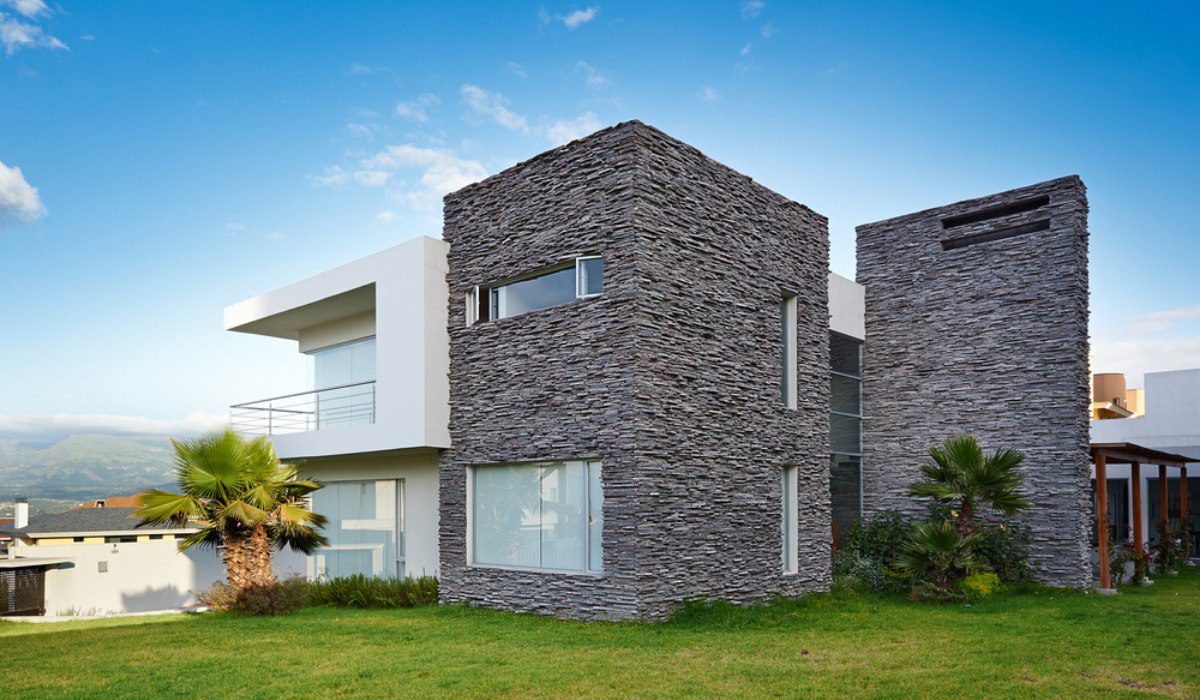Designing interiors with cladding tiles has become an increasingly popular trend in modern homes. Whether you’re aiming for a rustic, industrial, or contemporary look, cladding tiles offer versatile design possibilities that can transform your space. Not only do they enhance the aesthetic appeal of walls, but they also add texture, depth, and dimension to any room.
In this guide, we’ll explore how to effectively use cladding tiles in interior design, offering practical tips on selection, placement, and styling to elevate your home’s look.
1. Choose the Right Material for Your Space
When designing with cladding tiles, selecting the right material is crucial to achieving the desired effect. Each material has unique qualities, offering different textures and visual appeal. Here are some popular options:
- Natural Stone: Stone cladding tiles such as granite, limestone, or slate create a natural and earthy feel. They work well in spaces like living rooms, bathrooms, and even kitchens, offering durability and a timeless look.
- Brick: Brick cladding tiles give a rustic and industrial vibe, perfect for creating a cozy, warm atmosphere. They’re ideal for accent walls in living rooms, lofts, or office spaces.
- Wood: Wood cladding tiles add warmth and a natural aesthetic to interiors. They’re excellent for bedrooms or spaces where you want to introduce a sense of comfort and coziness.
- Ceramic or Porcelain: These types of cladding tiles are easy to clean and maintain, making them perfect for areas like kitchens or bathrooms. They also come in various finishes, from glossy to matte, allowing for greater design flexibility.
Choosing the right material not only influences the aesthetic but also affects the functionality and longevity of the space.
2. Incorporate Accent Walls for a Focal Point
One of the most effective ways to use cladding tiles in interiors is to create a striking accent wall. Accent walls immediately draw attention and can serve as a focal point in a room.
- Living Rooms: An accent wall behind the sofa or television in the living room can add a dramatic effect. Consider using textured stone or brick cladding tiles to make the space feel more dynamic and visually engaging.
- Bedrooms: Installing cladding tiles on the wall behind the bed can create a stylish and luxurious backdrop, making the bed area a true feature of the room.
- Bathrooms: A bathroom accent wall made of ceramic or porcelain cladding tiles can elevate the space, adding elegance and depth to otherwise simple or neutral designs.
When planning your accent wall, choose tiles that contrast with the other walls in the room. For example, dark stone tiles in a light-colored room create a striking contrast, while soft, neutral tones like light wood can complement a minimalist interior.
3. Consider Texture and Pattern
Cladding tiles come in various textures and patterns, which can significantly influence the overall look and feel of your space. Choosing the right texture and pattern is essential for creating the atmosphere you want.
- Textured Cladding Tiles: Textured tiles add dimension to the walls, creating an eye-catching effect that can make the room feel more intimate and inviting. Textured stone tiles, for instance, can give a room a natural, organic feel, while smoother ceramic or porcelain tiles may offer a more modern, minimalist vibe.
- Patterned Tiles: Some cladding tiles feature geometric or intricate patterns that can add artistic flair to your interior. These are particularly useful in smaller spaces like bathrooms or hallways, where you want to introduce visual interest without overwhelming the area.
- Mix and Match: Don’t be afraid to mix textures and patterns to create a layered, complex look. For example, combining rough stone tiles with smoother, sleeker materials can balance the rugged and refined elements, making the space more dynamic.
4. Ensure Proper Lighting to Highlight the Tiles
Lighting plays a crucial role in showcasing the beauty of cladding tiles. Properly lit tiles can enhance their texture, color, and overall impact in a room.
- Natural Light: If your room has plenty of natural light, it will highlight the subtle variations in the texture and color of the cladding tiles. Stone and brick tiles, in particular, benefit from natural light as it enhances their natural beauty.
- Artificial Lighting: Use accent lighting such as wall-mounted fixtures or recessed lighting to illuminate the cladding tiles. Spotlights can also be directed at the tiles to highlight their texture and depth. For rooms with darker tiles, consider using warm-toned lighting to add warmth to the space.
- Up-lighting and Down-lighting: Up-lighting can create a dramatic effect by casting shadows that highlight the tiles’ texture, while down-lighting can provide softer, more even lighting that illuminates the surface without casting too many shadows.
5. Pair Cladding Tiles with Complementary Materials
To create a balanced and cohesive design, pair your cladding tiles with complementary materials. The juxtaposition of different materials can create an interesting visual contrast while maintaining harmony in the design.
- Wood and Stone: Natural stone cladding tiles pair beautifully with wooden furniture or flooring, offering a balanced mix of warm and cool tones. This combination works well in living rooms or bedrooms, where you want to introduce natural elements.
- Metal and Brick: For a more industrial look, pair brick cladding tiles with metal accents such as stainless steel or iron fixtures. This combination is ideal for kitchens, lofts, or offices where you want to emphasize a modern, urban aesthetic.
- Glass and Ceramic: In bathrooms or kitchens, pairing ceramic cladding tiles with glass accents (such as glass shelves or fixtures) can create a sleek and polished look. The reflective quality of glass enhances the clean lines of the ceramic tiles, contributing to a modern and airy feel.
6. Think About Longevity and Maintenance
While cladding tiles are durable, different materials require varying levels of maintenance. When choosing cladding for interiors, consider how much effort you’re willing to put into upkeep.
- Stone Cladding Tiles: Natural stone requires sealing to protect it from moisture and stains, especially in areas like bathrooms or kitchens where water is present. Regular cleaning is necessary to prevent dust and dirt from settling in the tiles’ textures.
- Brick Cladding Tiles: Brick is relatively low maintenance, but it may require occasional cleaning to remove dust and debris. Sealants can also help preserve the appearance of brick tiles over time.
- Ceramic or Porcelain Cladding Tiles: These tiles are easy to clean and maintain, requiring little more than occasional wiping with water and a mild cleaning solution. They’re an excellent choice for high-traffic areas or spaces prone to spills.
7. Conclusion
Designing with cladding tiles can dramatically enhance your interiors by introducing texture, color, and depth. Whether you’re looking to create a bold statement with an accent wall or simply want to add some texture to your space, the key is to choose the right material, texture, and lighting to achieve the desired effect.
By following these tips, you can transform your home into a stylish and sophisticated space that showcases the beauty of cladding tiles. Whether it’s natural stone, brick, or ceramic, the right cladding tiles will not only elevate your interior design but also provide long-lasting durability and charm.





